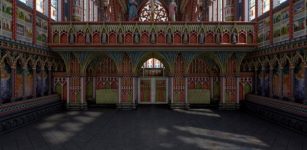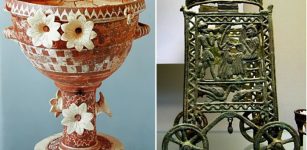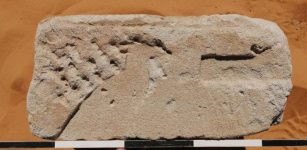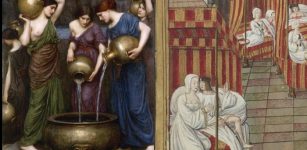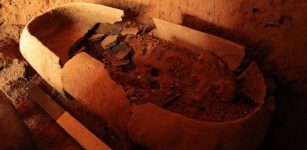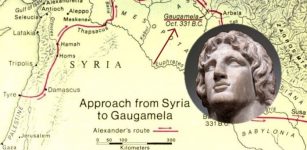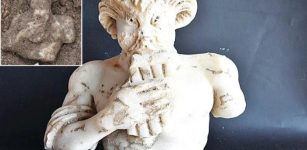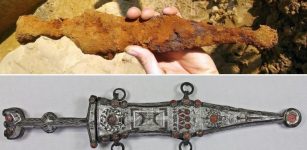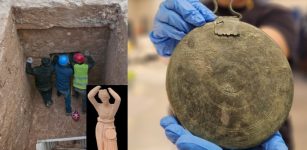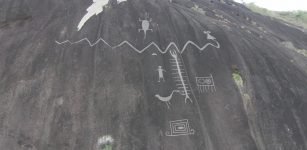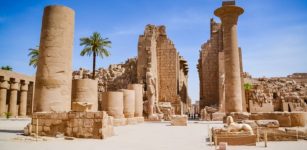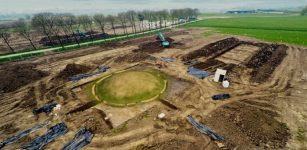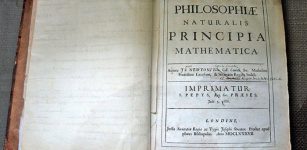A Head Of A Statue Dated To 700 BC, Animal Figurines And Jordan Valley’s Occupation History
AncientPages.com - In 2005, one year after the "Settling the Steppe" project started in the Jordan Valley, it revealed the discovery of fragments of hollow wheel-made anthropomorphic statues, reports The Jordan Times.
At that time, the archaeological team in charge aimed to reconstruct the occupation histories of several small areas in order to compare them with larger sites, like Tell Deir ‘Alla and Tell es-Sa’idiyeh. in the region.
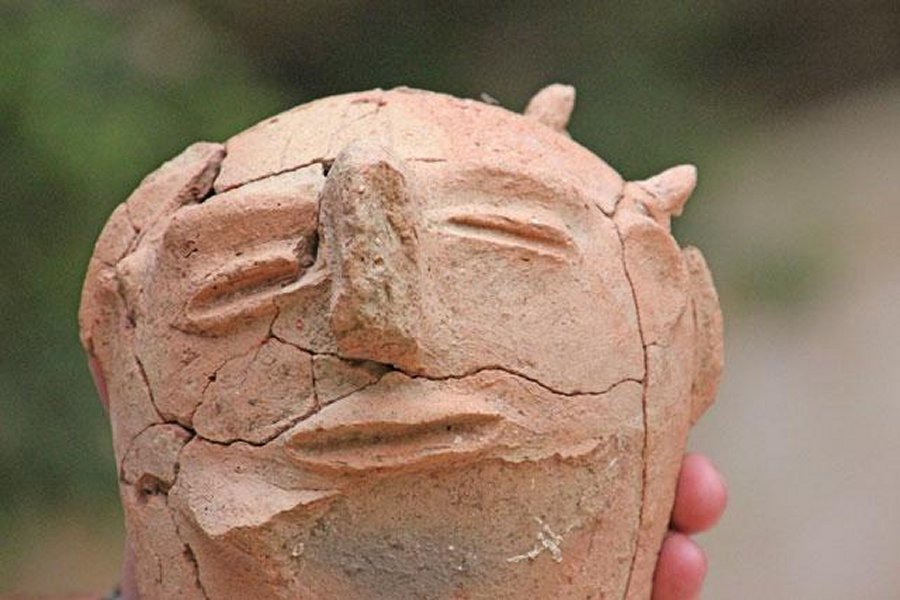
A head of a statue found at Tell Damiyah site in the central Jordan Valley (Photo courtesy of Lucas Petit)
"The discontinuous occupation schemes at these and a few other sites suggested that the valley was abandoned occasionally during the Iron Age II, most likely due to harsh wetter conditions [limited precipitation] or catastrophic events like earthquakes," Dutch archaeologist Lucas Petit said, noting that inhabitants moved to the plateau for a while before returning.
Tell Damiyah (a site in the central Jordan Valley) was trenched in 2004 and 2005, and the research team discovered that its occupation history was continuous, without any clear gaps, Petit continued, highlighting how "remarkable and intriguing" it was.
However, he said, researchers could not find the answer on why people remained at this site whereas the rest of the valley was abandoned.
"The statue [height 41 cm] was found in street levels dated provisionally to 700 BC. The object seems to have been discarded during occupation; inhabitants or visitors walked over it, causing it to break in numerous fragments. Except for the head, the rest of the statue could be restored and reconstructed," Petit explained.
"In 2013, we discovered a second statue [height 40 cm], in the same street levels as the first one — only two metres away. This one was less complete but resembles the first in detail. Again, the head was missing," Petit underlined.
Similar to the first, the statue was discarded on the street and suffered frequent trampling. Two years later, during a heavy sand storm, a head was discovered inside the building adjacent to the street, he said, adding that the head measured 13.9 cm in height and had a large protruding nose.
"Other human characteristics, such as ears, eyes and lips were attached to the head its headdress was made by incisions. The head was broken but could be restored," the Dutch archaeologist explained.
Unfortunately, the head did not belong to one of the two previously found statues, but researchers now had a good idea how a complete statue had looked like in 700 BC.They dated the head at the same date as statues.
Regarding the material these sculptures were made of, all three were made of clay and were fired like regular pottery, he explained, stressing that the exact function is "difficult to understand from the objects themselves" as they do not show any traces of use.
It is also not clear if they resemble humans or gods, he noted.
"The building was rectangular and contained two, let us say, spaces divided by a small sidewall; the entrance to this building was via the street on which the two discarded statues were found; both spaces of the building had a podium made of mudbricks, which was lime-plastered," Petit elaborated, noting that one of explanations is the podium in the larger western room where several animal figurines.
"The way these animal figurines were found suggested that they had been standing on the podium at the moment the building collapsed," Petit said, adding that the reason for the collapse is still debated but it was fast and furious, including fire.
"Could be an enemy attack or an earthquake?" he speculated.
Furthermore, this building did not contain any domestic utensils. No cooking pots, loom weights or grinding stones, the researcher continued, saying: "The only artefacts on the floor were those figurines, the head, a few complete pots and two carefully placed bovid skulls."
These artefacts are generally agreed to have been used in a culticsetting, Petit said, noting that it is therefore very reasonable to imagine that this central building at Tell Damiyah was used as a sanctuary around 700 BC.
Since Damiyah could not house so many inhabitants — only a few houses — the users of the sanctuary could be traders and travellers, he maintained.
"It is suggested here that gifts and offerings in this sanctuary, located close by one of the few fords of the Jordan River, gave the visitor protection during his travel. At this stage, it is unclear what precise function the statues had. In any case, the discovery of a sanctuary with complete material on its floors is a very rare find in the area and may tell us much about religion during the Late Iron Age," Petit concluded.
AncientPages.com



